Introduction of Soak Pit Design
Important Point
If there is no intention or need to reuse wastewater, collected rainwater or gray water, immersion pits can offer an economic opportunity for partial treatment of waste-water or ash from a primary treatment (eg septic tank, double pits for flush toilets, biogas collector, deflector anaerobic reactor, etc.) and a relatively safe way to discharge it into the environment and thus recharge groundwater bodies.
As the waste-water (gray water or black water after primary treatment) penetrates the soil from the immersion well, small particles are filtered through the soil matrix and organics are digested by microorganisms.
The waste-water effluent is absorbed by the soil particles and moves horizontally and vertically through the soil pores.
The subsoil layers must, therefore, be permeable to water in order to avoid rapid saturation. High daily volumes of discharged effluents must be avoided (HEEB et al. 2008).
Thus, immersion wells are more suitable for soil with good absorption properties; clay, hard or rocky soil is not appropriate.
Immersion wells are used in the same way as leach fields but require less space, as well as less operation and maintenance.
But they can also generally receive less influence, and groundwater pollution can be greater than in leach fields.
Also, read: M30 Grade of Concrete Mix Design Procedure with OPC 53 Cement
Design Considerations of Soak Pit Design
The immersion well, basically consisting of a single well (usually approximately 1 m3), should be between 1.5 and 4 m deep, but, as a general rule, never less than 2 m above the water table.
It must be located at a safe distance from a source of drinking water (preferably more than 30 m).
The immersion well must be kept away from areas of heavy traffic, so that the soil above and around it is not compacted.
It can be left empty and lined with a porous material to provide support and prevent collapse, or left unfinished and filled with thick stones and gravel.
The rocks and gravel will prevent the walls from collapsing, but will still provide adequate space for wastewater.
In both cases, a layer of sand and fine gravel should be spread over the bottom to help disperse the flow.
To allow future access, a removable cover (preferably concrete) must be used to seal the well until it needs to be maintained.
Also, read: Methods of Design | Difference Between Working Stress Method and Limit State Method
Health Aspects / Acceptance of Soak Pit
As long as the immersion well is not used for raw sewage, and as long as the previous collection and storage/treatment technology is working well, health concerns will be minimal.
The technology is located underground and, therefore, humans and animals should not have contact with the effluent.
It is important, however, that the immersion well is located at a safe distance from a source of drinking water (preferably at least 30 m).
As the immersion well is odorless and is not visible, it must be accepted by even the most sensitive communities.
Operation and Maintenance of Soak Pit
A good-sized immersion well should last between 3 and 5 years without maintenance.
To prolong the life of immersion well, care must be taken to ensure that the effluent has been clarified and/or filtered to avoid excessive accumulation of solids.
The immersion well must be kept away from areas of heavy traffic, so that the soil above and around it is not compacted.
Particles and biomass will eventually clog the well and will need to be cleaned or moved. When the performance of the immersion well deteriorates, the material inside the immersion well can be excavated and replenished.
To allow for future access, a removable (preferably concrete) lid should be used to seal the pit until it needs to be maintained.
Also, read: What Is Admixture | Types of Admixtures
Applicability of Soak Pit
A soak pit does not provide adequate treatment for raw wastewater and the pit will quickly clog. It should be used for discharging pre-settled blackwater or greywater.
Soak pits are appropriate for rural and peri-urban settlements. They depend on soil with sufficient absorptive capacity, whereas clay soils, as well as hard-packed or rocky soils, are not appropriate.
They can be used in almost every temperature, although there may be problems with pooling effluent in areas where the ground freezes.
They are not appropriate for areas prone to flooding or that have high groundwater tables and should be constructed at a distance of at least 30 m from drinking water wells in order to prevent cross-contamination.
Also, read: H-Beam vs I-Beam | What Is H-Beam | What is I-Beam
Soak Pit: Need and Functions
A soak pit or a soakaway is a closed porous chamber that is directly connected to a primary treatment unit of a residential or commercial building.
It serves the function of letting the wastewater coming from the septic tank to slowly soak into the underlying ground.
Why Need for Soak Pit of Soak Pit Design?
The water coming out from a primary treatment chamber is not pure. The primary treatment unit can be a septic tank, a biogas settler, anaerobic baffled reactor, twin-pits, etc.
The effluent water coming out of these units are called greywater, which must be subjected to a partial treatment before letting it into the ground soil.
For this partial treatment, most of the wastewater management system needs a soak pit. There is no intention to reuse the wastewater that is coming from the primary treatment unit.
But the partial treatment of effluent water through a soak pit is a safer way of discharging the water into the environment.
Also, read: What Is Bar Bending Schedule | Preparation as Per Bs 4466 | Tolerances as Per Bs 4466
Function of Soak Pit
The greywater passing through the soak pit is subjected to filtration. This results in the settlement of smaller particles of effluents at the bottom of the soak pit.
These smaller particles are digested by the microorganisms which are a sustainable process of degradation. The filtered water is then discharged out through the porous wall of the soak pit.
In General, the Important Functions of a Soak Pit Are Enlisted Below:
- Soak pit serves the purpose of receiving the effluent water from the primary treatment
- Soak pit undergoes the partial treatment of the effluent water coming out of the primary treatment unit.
- The soak pit discharges clear and non-harmful water to the ground.
- The soak pit is designed in such a way that the treated water comes out of the porous walls of the soak pit.
- The soak pit helps to recharge the groundwater bodies.
Also, read: Benchmark in Surveying | TBM in Surveying | GTS Benchmark| Permanent Benchmark| Arbitrary Benchmark
Advantages of Soak Pit
Heres, pros of Soak pit are as follows.
- It can be built and repaired with locally available materials.
- Technique simple to apply for all users.
- A small land area is required.
- Low capital costs; low operating costs.
- Recharging groundwater bodies.
Disadvantages of Soak Pit
Heres, cons of Soak pit are as follows.
- Primary treatment is required to prevent clogging.
- May negatively affect soil and groundwater properties.
- Applicable only were soil conditions allow infiltration, the groundwater table is at least 5 m below the soak pit, there is no risk for flooding and any water well is in a distance of at least 30m.
- Difficult to realize in cold climate.
- Should be avoided for high daily volumes of discharged effluents.
Summary of Soak Pit
A soak pit, also known as a soakaway or leach pit, is a covered, porous-walled chamber that allows water to slowly soak into the ground.
Pre-settled effluent from a collection and storage/treatment or (semi-) centralized treatment technology is discharged to the underground chamber from which it infiltrates into the surrounding soil.
Soak Pit Construction Method
A soak pit is constructed in the natural ground by the dry bricks with open joints in a circular shape as shown in the below picture. The wastewater can easily soak on the ground. The soaking pit should be raised above ground level and the surface water should not enter into the soak pit.
Soak Pit Design for Rainwater Harvesting
Designing a soak pit for rainwater harvesting involves considering factors such as the catchment area, rainfall intensity, soil type, and the volume of water to be stored. Here are the general steps to design a soak pit for rainwater harvesting:
- Determine the catchment area
- Calculate the runoff volume
- Assess the soil type
- Determine the size of the soak pit
- Select the location
- Excavation and construction
- Inlet and outlet arrangement
- Backfill and cover
- Maintenance and monitoring
Residential Soak Pit Design Guidelines
Design consideration of Soak Pit
- The soak pit shall not be less than 900mm in diameter& 1500mm in depth below the invert level of the inlet pipe.
- The absorption area of the soak pit could be 1 Sqm to 1.5 Sqm per head of the user.
- The soaking pit should be covered by the precast slab.
Soak Pit Construction and Design Manual
A soak pit, also known as a soakaway or septic tank soakaway, is an underground structure designed to receive and disperse wastewater from septic tanks or other sources. It allows the effluent to percolate into the surrounding soil, where it is treated naturally through biological processes.
Here are some general guidelines for soak pit construction and design:
- Site Selection
- Size Calculation
- Excavation
- Perforated Chamber
- Inlet and Outlet Pipes
- Backfilling
- Ventilation
- Maintenance
Best Practices for Designing a Soak Pit
The soak pit should be kept away from high-traffic areas so that the soil above and around it is not compacted. It can be left empty and lined with a porous material to provide support and prevent collapse, or left unlined and filled with coarse rocks and gravel.
Soak Pit Design for Wastewater Treatment
- The design of a typical soak pit generally consists of a pit of approximately 1 cubic meter with a depth of 1.5m to 4m.
- It must not be constructed nearby a drinking water source as it can pose contamination of the drinking water source.
Soak Pit
A soak pit, also known as a soakaway or septic tank soakaway, is an underground structure used for the disposal of wastewater from a septic tank or other sewage treatment system. It is designed to receive the effluent (liquid waste) from the septic tank and allow it to slowly percolate into the surrounding soil, where it is further treated and purified.
Soakage Pit
A soakage pit, also known as a soakaway or seepage pit, is an underground structure designed to manage and dispose of excess surface water or wastewater from buildings and structures. It is commonly used as a drainage solution in areas where connection to a centralized sewer system is not feasible or environmentally sustainable.
Soakage Pit Design
Designing a soakage pit involves considering factors such as the soil type, water table level, anticipated wastewater flow, and local regulations. A soakage pit, also known as an infiltration pit or soakaway, is a simple method of disposing of stormwater or wastewater by allowing it to percolate into the ground. Here are some general guidelines for designing a soakage pit:
- Site Evaluation
- Sizing the Soakage Pit
- Pit Construction
- Overflow and Maintenance
Soak Pit Size
The soak pit shall not be less than 900mm in diameter& 1500mm in depth below the invert level of the inlet pipe. The absorption area of the soak pit could be 1 Sqm to 1.5 Sqm per head of the user. The soaking pit should be covered by the precast slab.
Soak Pit Depth
Soak pit shall not be less than 90 cm (Approx 3 feet) in diameter and not less than 1.5 m ( Approx 5 feet) in depth below the invert level of the inlet pipe.
How to Make Soak Pit?
A soak pit, also known as a soakaway or leach pit, is a simple and effective method for managing and dispersing excess water from areas such as roofs, driveways, or gardens. It helps prevent waterlogging and drainage issues. Here’s a general guide on how to make a soak pit:
- Determine the location
- Check local regulations
- Dig the pit
- Line the pit (optional)
- Create an inlet
- Add a layer of gravel
- Fill with absorbent material
- Add a layer of sand
- Cover the pit
- Maintain and monitor
What Points to Be Kept While Sighting a Soakage Pit in a Camp?
It should be located at a safe distance from a drinking water source (ideally more than 30 m). The soak pit should be kept away from high-traffic areas so that the soil above and around it is not compacted.
How Deep Should a Soak Pit Be?
The Soak Pit should be between 1.5 and 4 m deep, and as a rule of thumb, never less than 2 m above the highest groundwater table. It should be located at a safe distance from a drinking water source (ideally more than 30 m).
Like this post? Share it with your friends!
Suggested Read-
- Para Pit
- Black and Grey Water
- Excavation Rates Per M3
- Ductility Test of Bitumen | Three Different Methods of Ductility Testing
- What Is Cover in Concrete | Clear Cover in Beams, Slab, Column, Footing
- Difference Between Short Column and Long Column | What Is Column | Type of Column
- What Is Diversion of Headworks (Rivers) | Types of Diversion Headworks | Component Parts of Diversion Headworks (Rivers)
- What Is Self Compact Concrete | Equipment V-Funnel Test | Procedure V-Funnel Test. | Procedure for V-funnel flow time at T5 mm
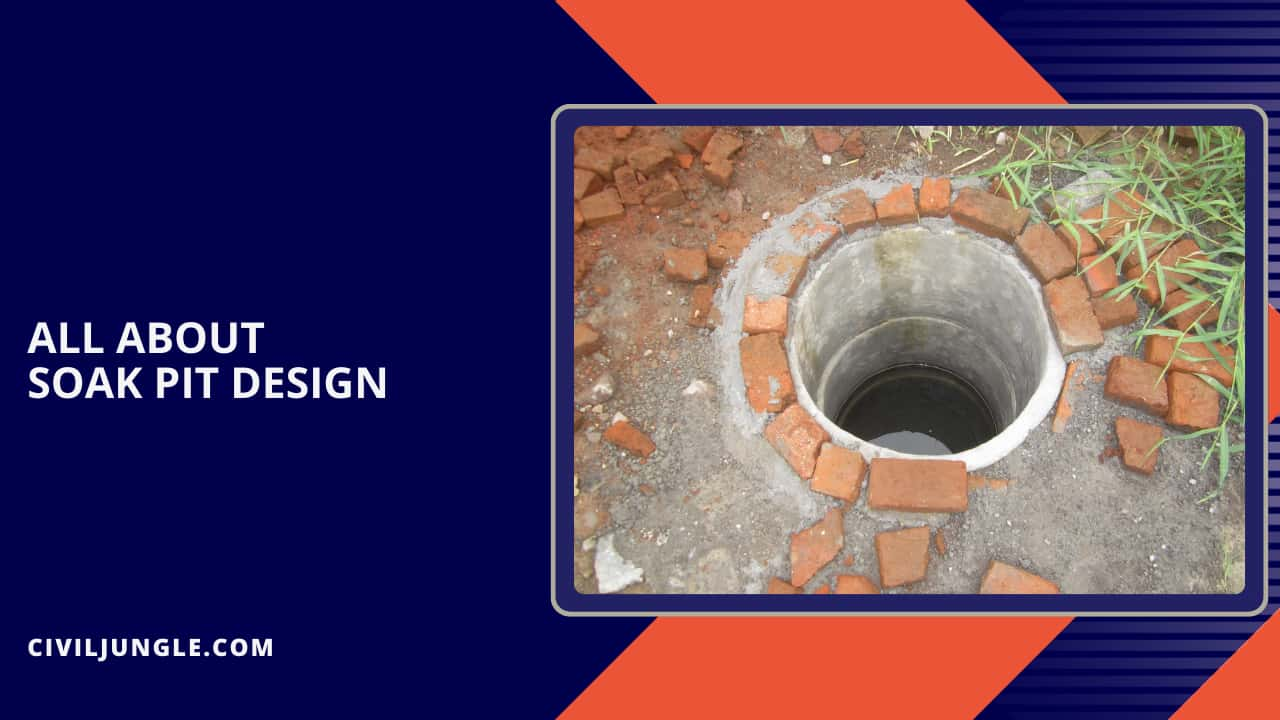
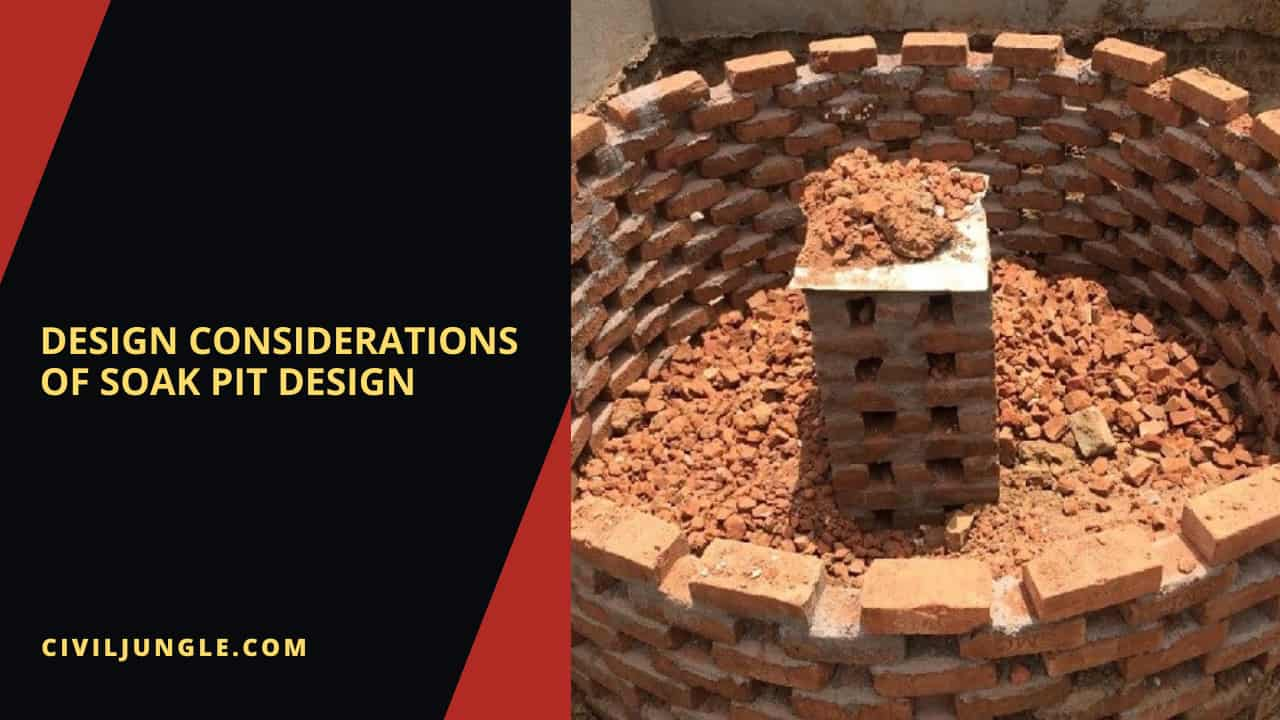

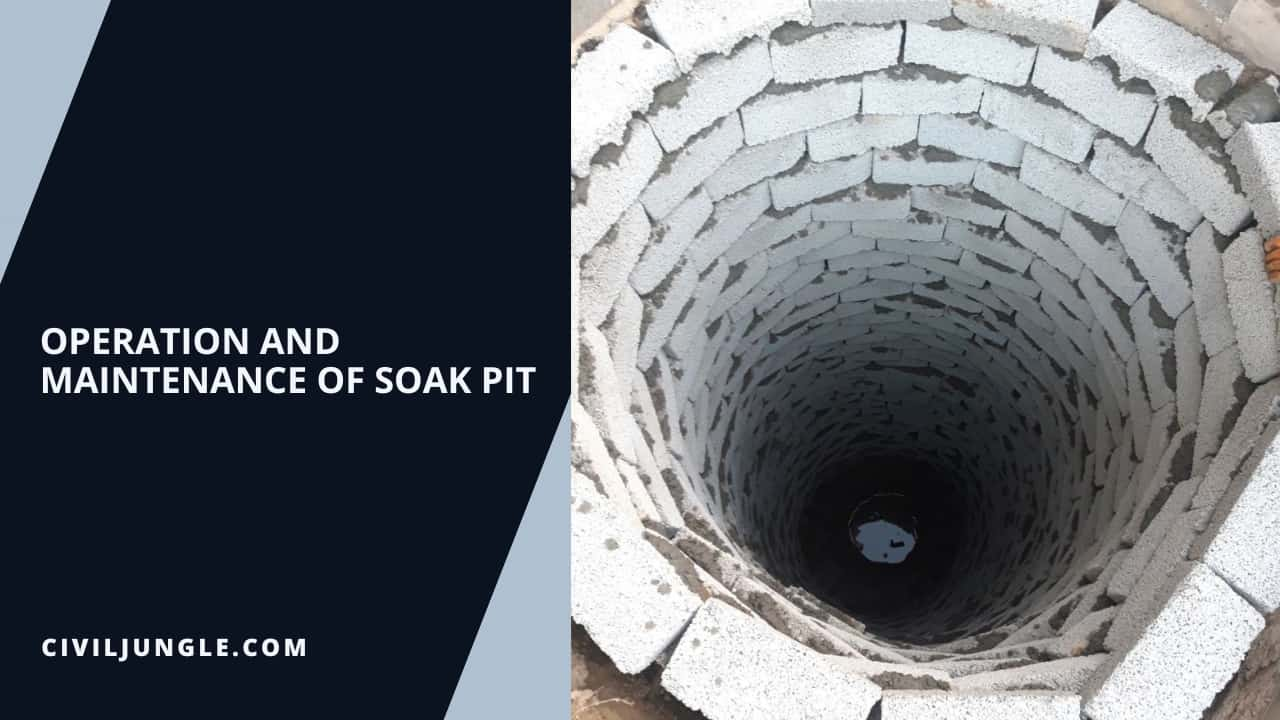
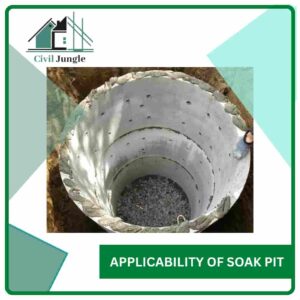
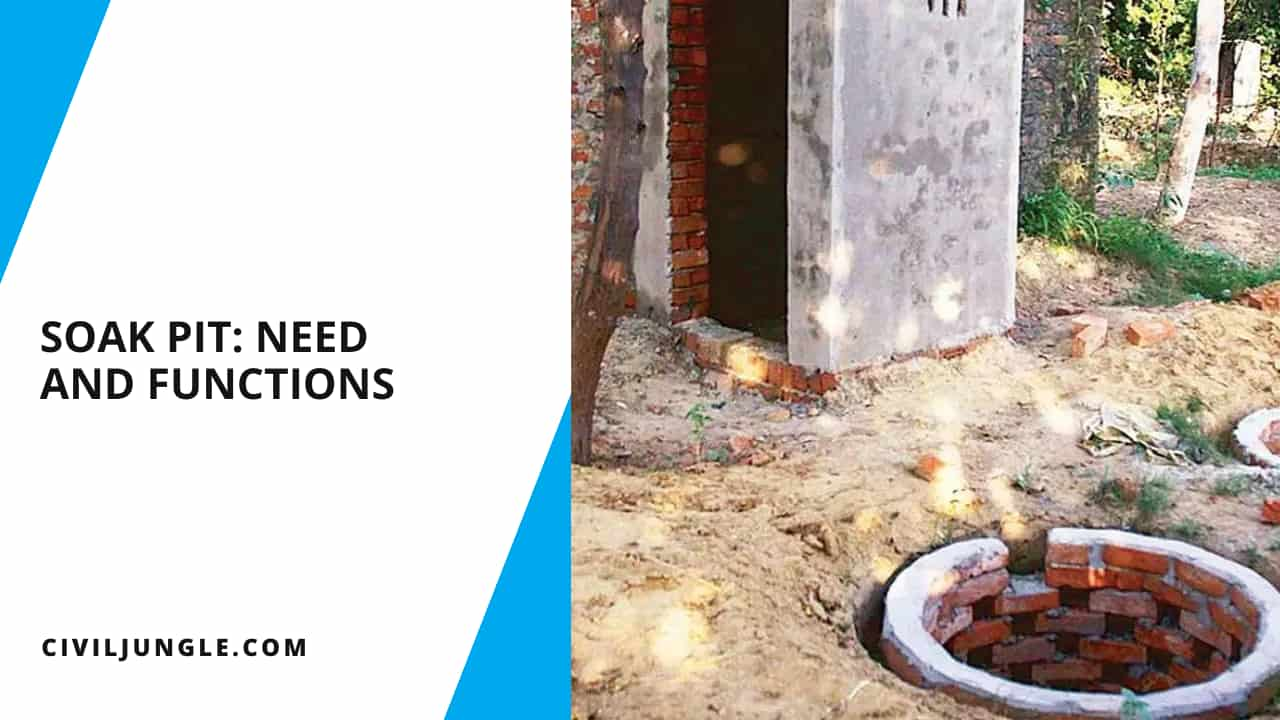
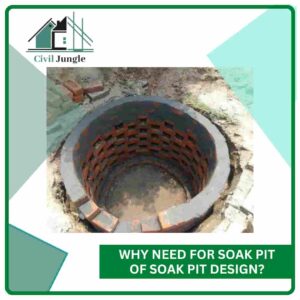
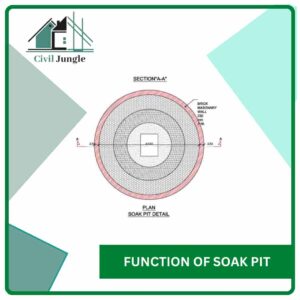
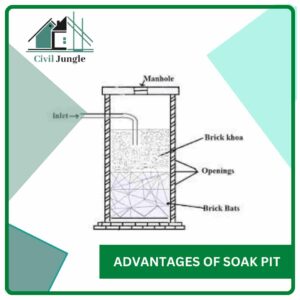
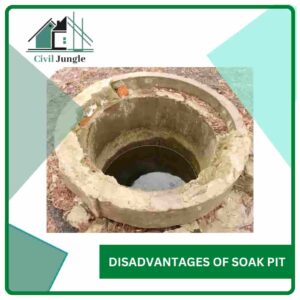

Nice Article
Thanks, Sir